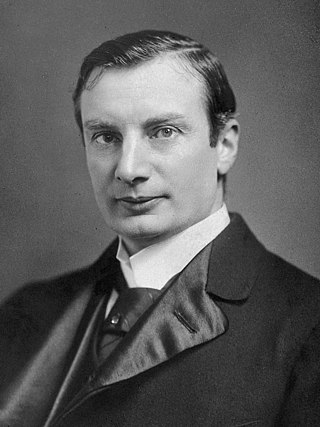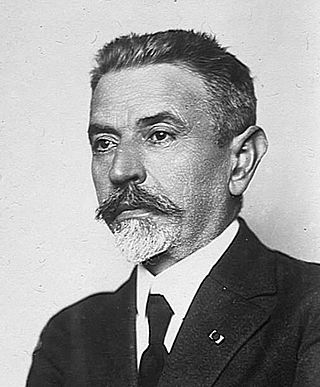Related Research Articles

Plague is an infectious disease caused by the bacterium Yersinia pestis. Symptoms include fever, weakness and headache. Usually this begins one to seven days after exposure. There are three forms of plague, each affecting a different part of the body and causing associated symptoms. Pneumonic plague infects the lungs, causing shortness of breath, coughing and chest pain; bubonic plague affects the lymph nodes, making them swell; and septicemic plague infects the blood and can cause tissues to turn black and die.
The Grant Government Medical College is a public medical college located in Mumbai, India. It is affiliated to the Maharashtra University of Health Sciences. Founded in 1845, it is one of the oldest medical colleges in South Asia. Its clinical affiliate is Sir J.J. Group of Hospitals, a conglomerate of four hospitals in South Mumbai including Sir J.J. Hospital, St George Hospital, Gokuldas Tejpal Hospital and Cama and Albless Hospital.

Parel is a neighbourhood of Mumbai. Parel used to have a number of textile mills, but these have been replaced by commercial office space development.

Waldemar Mordechai Wolff Haffkine was a Russian-French bacteriologist known for his pioneering work in vaccines.

The third plague pandemic was a major bubonic plague pandemic that began in Yunnan, China, in 1855. This episode of bubonic plague spread to all inhabited continents, and ultimately led to more than 12 million deaths in India and China, and at least 10 million Indians were killed in British Raj India alone, making it one of the deadliest pandemics in history. According to the World Health Organization, the pandemic was considered active until 1960 when worldwide casualties dropped to 200 per year. Plague deaths have continued at a lower level for every year since.

The history of Mumbai can be traced back to 600 BC, with evidence of the first known settlement of the Harrappan civilization discovered in the region.

Acacio Gabriel Viegas was a medical practitioner who was credited with the discovery of the outbreak of bubonic plague in Bombay, India, in 1896. His timely discovery helped save many lives in the city and was credited with the inoculation of 18,000 residents. He was also the president of the Bombay Municipal Corporation.

The Bombay plague epidemic was a bubonic plague epidemic that struck the city of Bombay in the late nineteenth century. The plague killed thousands, and many fled the city leading to a drastic fall in the population of the city. In September 1896, Bombay's municipal administration declared the presence of bubonic plague in the city. Ineffective protocols administered furthering the spread. By January 1897 half the population fled to the countryside.

Bombay Castle is one of the oldest defensive structures built in the city of Mumbai. The current castle is a structure built by the British on the site of the Manor House built by a Portuguese nobleman Garcia de Orta. Orta had leased the island of Bombay from the King of Portugal between 1554 and 1570.

Raj Bhavan, Pune is the monsoon official residence of the governor of Maharashtra. It is located in the city of Pune, India.

Amédée Marie Vincent Borrel was a French physician and microbiologist born in Cazouls-lès-Béziers, Hérault.

A cholera vaccine is a vaccine that is effective at preventing cholera. For the first six months after vaccination it provides about 85 percent protection, which decreases to 50 percent or 62 percent during the first year. After two years the level of protection decreases to less than 50 percent. When enough of the population is immunized, it may protect those who have not been immunized.

Plague vaccine is a vaccine used against Yersinia pestis to prevent the plague. Inactivated bacterial vaccines have been used since 1890 but are less effective against the pneumonic plague, so live, attenuated vaccines and recombinant protein vaccines have been developed to prevent the disease.

Joseph James Kinyoun was an American physician and the founder of the United States' Hygienic Laboratory, the predecessor of the National Institutes of Health.
Major General Sir Sahib Singh Sokhey FNA, FASc was an Indian biochemist, a British Indian Army general and a military physician who was also a nominated member of the Rajya Sabha, the Upper House of the Indian Parliament, from 3 April 1952 to 2 April 1956.
Major General William Burney Bannerman CSI FRSE was a 19th and 20th century high-ranking Scottish military surgeon who worked in the Indian Medical Service. As director of the plague research laboratory, he conducted experiments on plague vaccines along with Waldemar Haffkine. He was one of the first to use Henry Littlejohn's analytical techniques on a large scale, demonstrating the value of inoculation.

Colonel Frederick Percival MackieCSI OBE KHS FRCP FRCS was an English physician who was in the Indian Medical Service between 1901 and 1931 working on the incidence, transmission, and pathology of insect-borne tropical diseases. He discovered the vectors for relapsing fever and kala-azar. He had important administrative responsibilities in Iraq during the First World War and emerged as a leading figure in Indian medical science, public health, and tropical hygiene between the wars as director of the Haffkine Institute in Bombay (Mumbai).
Lieutenant Colonel William Glen Liston was a British Army doctor and medical entomologist who worked in the Indian Medical Service and was among the first experimenters to demonstrate that plague was transmitted by rat fleas and was involved in developing a plague vaccine.

Sir Nasarvanji Hormusji Choksy was an Indian medical doctor who worked in Bombay. He was titled Khan Bahadur and knighted in 1929 for his contributions to public health, particularly for his work in dealing with smallpox, leprosy, tuberculosis, and plague. He contributed to medical advance with his approach to clinical trials in testing plague vaccines.
References
- 1 2 3 "History". Haffkine Institute. Archived from the original on 24 September 2015. Retrieved 30 September 2014.
- ↑ "Museum of Maladies and their miracles". Mumbai Mirror. 6 March 2014. Archived from the original on 6 October 2014. Retrieved 30 September 2014.
- 1 2 "From Directors Desk". Haffkine Institute. Archived from the original on 6 October 2014. Retrieved 30 September 2014.
- ↑ Hanhart, Joel (2017). Un illustre inconnu (in French). Paris: Lichma. ISBN 978-2-912553-84-3.
- ↑ Hanhart, Joel (2016). Waldemar Mordekhaï Haffkine (1860-1930). Biographie intellectuelle (in French). Paris: Éditions Honoré Champion. ISBN 978-2-7453-3074-1.
- ↑ Brown, G H (1944). "Frederick Percival Mackie". RCP Museum. Retrieved 13 March 2022.
- ↑ "FREDERIC PERCIVAL MACKIE, C.S.I., O.B.E., M.D., M.Sc., D.P.H. (Bristol), F.R.C.S." (PDF). S2CID 36776193. Archived from the original (PDF) on 20 February 2019. Retrieved 12 March 2022.
- ↑ Gillian Tindall (1992). City of Gold: The Biography of Bombay. Penguin Books India. p. 38. ISBN 978-0-14-009500-5.
- ↑ "The History of Raj Bhavan, Mumbai". Raj Bhavan Maharashtra. Archived from the original on 6 October 2014. Retrieved 30 September 2014.
- ↑ Debi Prasad Chattopadhyaya (1999). History of Science, Philosophy and Culture in Indian Civilization: pt. 1. Science, technology, imperialism and war. Pearson Education India. pp. 556–. ISBN 9788131728185.